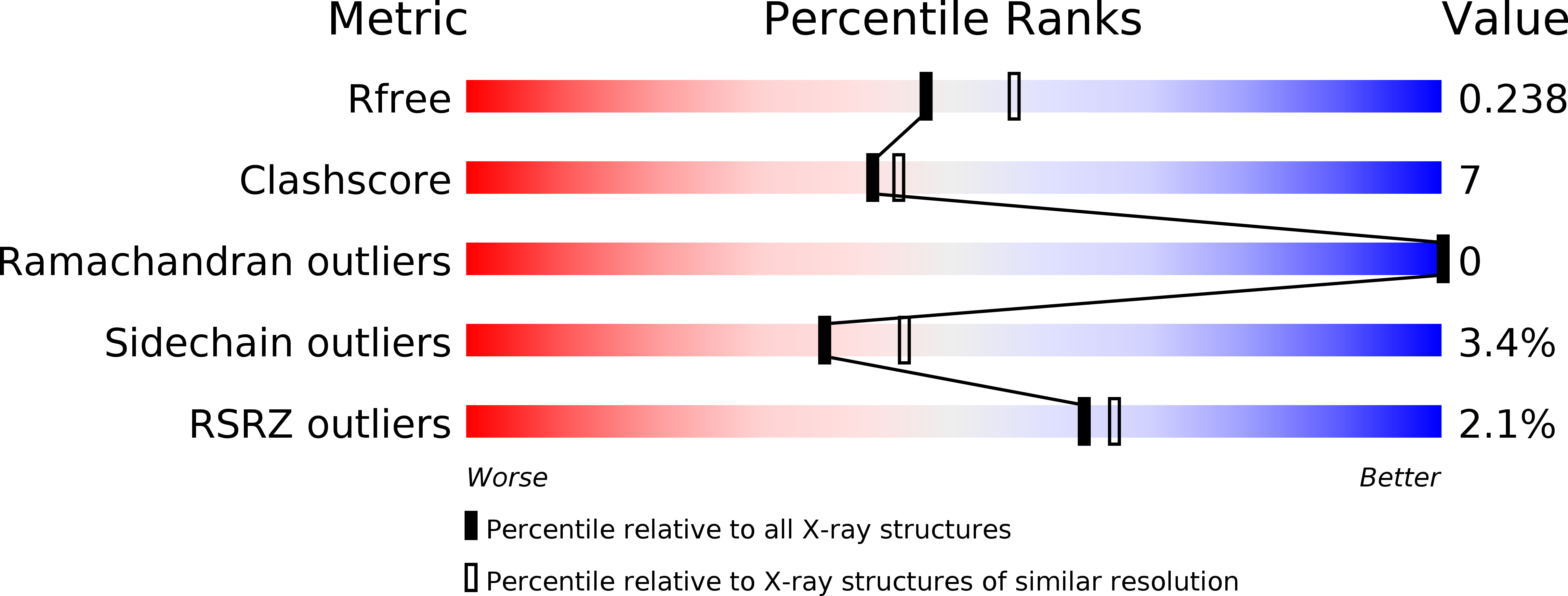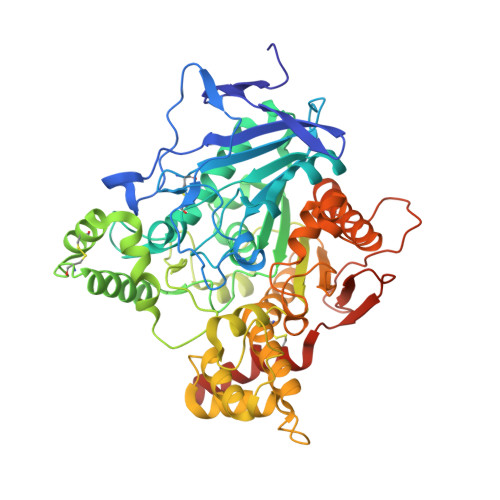Kinetics of Torpedo Californica Acetylcholinesterase Inhibition by Bisnorcymserine and Crystal Structure of the Complex with its Leaving Group.
Bartolucci, C., Stojan, J., Yu, Q.S., Greig, N.H., Lamba, D.(2012) Biochem J 444: 269
- PubMed: 22390827
- DOI: https://doi.org/10.1042/BJ20111675
- Primary Citation of Related Structures:
3ZV7 - PubMed Abstract:
Natural and synthetic carbamates act as pseudo-irreversible inhibitors of AChE (acetylcholinesterase) as well as BChE (butyrylcholinesterase), two enzymes involved in neuronal function as well as in the development and progression of AD (Alzheimer's disease). The AChE mode of action is characterized by a rapid carbamoylation of the active-site Ser(200) with release of a leaving group followed by a slow regeneration of enzyme action due to subsequent decarbamoylation. The experimental AD therapeutic bisnorcymserine, a synthetic carbamate, shows an interesting activity and selectivity for BChE, and its clinical development is currently being pursued. We undertook detailed kinetic studies on the activity of the carbamate bisnorcymserine with Tc (Torpedo californica) AChE and, on the basis of the results, crystallized the complex between TcAChE and bisnorcymserine. The X-ray crystal structure showed only the leaving group, bisnoreseroline, trapped at the bottom of the aromatic enzyme gorge. Specifically, bisnoreseroline interacts in a non-covalent way with Ser(200) and His(440), disrupting the existing interactions within the catalytic triad, and it stacks with Trp(84) at the bottom of the gorge, giving rise to an unprecedented hydrogen-bonding contact. These interactions point to a dominant reversible inhibition mechanism attributable to the leaving group, bisnoreseroline, as revealed by kinetic analysis.
Organizational Affiliation:
Istituto di Cristallografia, Consiglio Nazionale delle Ricerche, Area della Ricerca di Roma, Monterotondo Scalo, Italy. [email protected]






















